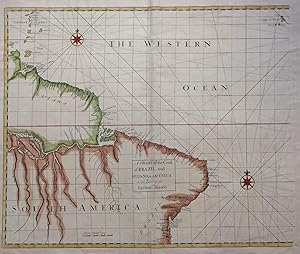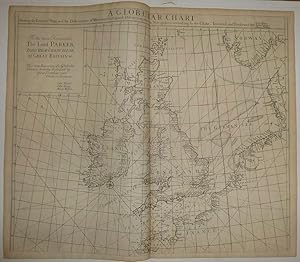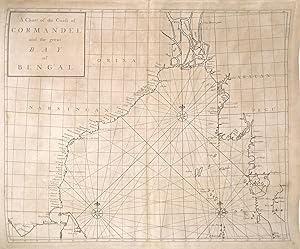cutler nathaniel halley sir edmond (4 résultats)
Filtres de recherche
Type d'article
- Tous les types de produits
- Livres (4)
- Magazines & Périodiques (Aucun autre résultat ne correspond à ces critères)
- Bandes dessinées (Aucun autre résultat ne correspond à ces critères)
- Partitions de musique (Aucun autre résultat ne correspond à ces critères)
- Art, Affiches et Gravures (Aucun autre résultat ne correspond à ces critères)
- Photographies (Aucun autre résultat ne correspond à ces critères)
- Cartes (Aucun autre résultat ne correspond à ces critères)
- Manuscrits & Papiers anciens (Aucun autre résultat ne correspond à ces critères)
Etat En savoir plus
- Neuf (Aucun autre résultat ne correspond à ces critères)
- Comme neuf, Très bon ou Bon (Aucun autre résultat ne correspond à ces critères)
- Assez bon ou satisfaisant (Aucun autre résultat ne correspond à ces critères)
- Moyen ou mauvais (Aucun autre résultat ne correspond à ces critères)
- Conformément à la description (4)
Reliure
- Toutes
- Couverture rigide (1)
- Couverture souple (Aucun autre résultat ne correspond à ces critères)
Particularités
- Ed. originale (Aucun autre résultat ne correspond à ces critères)
- Signé (Aucun autre résultat ne correspond à ces critères)
- Jaquette (Aucun autre résultat ne correspond à ces critères)
- Avec images (4)
- Sans impressions à la demande (4)
Langue (1)
Prix
- Tous les prix
- Moins de EUR 20 (Aucun autre résultat ne correspond à ces critères)
- EUR 20 à EUR 45 (Aucun autre résultat ne correspond à ces critères)
- Plus de EUR 45
Livraison gratuite
- Livraison gratuite à destination de Etats-Unis (Aucun autre résultat ne correspond à ces critères)
Pays
Evaluation du vendeur
-
Atlas maritimus & commercialis; or, a general view of the world, so far as relates to trade and navigation / Sailing Directions for All the Known Coasts and Islands on the Glob, with a Sett of Sea-Charts
Edité par James Knapton, London, 1728
Vendeur : Argosy Book Store, ABAA, ILAB, New York, NY, Etats-Unis
EUR 30 812,90
Autre deviseEUR 5,13 expédition vers Etats-UnisQuantité disponible : 1 disponible(s)
Ajouter au panierhardcover. Two parts in one volume. Illustrated with 53 of 54 fine uncolored copper plate maps, (last celestial chart is missing with a full size facsimile version provided from the British Library edition), and 5 fold-out diagrams tipped into the second text. Title page printed in black and red, foreword, preface, list of subscribers, and list of charts. Dedication page has a repair to the margin. "Atlas maritimus & commercialis," 340 pp. plus index. "General Coasting Pilot," 195 pp. plus maps. Page numbers written in ink. Elephant folio (21.25" x 13"), scuffing and corner wear to original brown leather binding, gilt spine in 8 compartments. Some toning and light scattered foxing to text and maps. Repairs to World Chart, North America chart and Celestial map along bottom fold out, small abrasion in margin of China map. Bookplate pasted down with Coat of Arms of Verney. This commercial sea atlas was published in 1728 as a guide to British global commerce. Today, it is a historically significant English overview of world trade during a rapid period of development of the British Empire's trading power. The atlas consists of two parts. The first is the "Atlas Maritimus & Commercialis" proper, which provides a geographical overview of the world as it relates to trade and navigation. It also gives an account of contemporary commerce, including the traded commodities of each country. The second part is "A General Coasting Pilot" by Nathaniel Cutler, which provides sailing directions. The volume was published anonymously, though the maps are often attributed to Sir Edmond Halley, the Astronomer Royal of Britain, who also wrote the prefatory note discussing the charts' use. The atlas's emphasis on commerce in addition to geography distinguishes it from "The English Pilot," the period's standard in maritime charts. It was also notable for covering the entire globe, including the south and west coasts of America, in one volume. This is an early issue of the Atlas, with A Chart of the Coast of Scotland on a globular projection. London: 1728. Sir Edmond Halley (1656--1742) was an English astronomer, geophysicist, mathematician, meteorologist, and physicist known for computing the orbit of the eponymous Halley's Comet. He was the second Astronomer Royal in Britain after John Flamsteed. John Senex (1678-1740) was a kind of Renaissance man of the 18th-century map world, working at times as a scholar, surveyor, engraver, astrologer, book seller and publisher of maps, atlases and globes. In a short period, he developed from an apprentice into one of the most important cartographers of the period and became a Fellow of the Royal Society of London, as well as Official Geographer to Queen Anne of Great Britain. A wonderful rarity about 'Globular Projection" maps which was invented by Halley, Harris and Senex. Includes the unforgettable large four sheet map "A Chart of the Atlantick Ocean Shewing the Coast from Texel to C. Cantin".
-
A Chart of the Coast of Brazil and Guiana in America: with Part of the Caribbe Islands
Edité par James and John Knapton, 1728
Vendeur : Argosy Book Store, ABAA, ILAB, New York, NY, Etats-Unis
EUR 440,18
Autre deviseEUR 5,13 expédition vers Etats-UnisQuantité disponible : 1 disponible(s)
Ajouter au panierunbound. First. Sea Chart. Colored engraving. Sheet measures 21 1/4" x 25". Image measures 19 1/2" x 23 1/2". This stunning map of the western hemisphere depicts Guiana and Brazil in South America presented on Edward Wright's projection, also called a globular projection. It features rhumb lines to facilitate navigation. The map focuses more on the coastlines rather than the interiors. This chart was made for the 1728 issued of "Atlas maritimus & commercialis, or, A general view of the world, so far as relates to trade and navigation". The atlas which was meant to compete with Mount and Page's popular "English Pilot", was a collaboration between some of the leading cartographers of the time, including Sir Edmund Halley, John Senex, Nathaniel Cutler, Steven Parker and Daniel Defoe. The atlas unfortunately failed to achieve commercial success as great as its rival, making this a hard-to-find map. The map is in good condition with minor wear along the original folds and overall toning. Some toning over joint. Original plate mark is visible. John Senex (1678-1740) was a kind of Renaissance man of the 18th-century map world, working at times as a scholar, surveyor, engraver, astrologer, book seller and publisher of maps, atlases and globes. In a short period, he developed from an apprentice into one of the most important cartographers of the period and became a Fellow of the Royal Society of London, as well as Official Geographer to Queen Anne of Great Britain. Although well regarded for his pocket-size maps, Senex is probably best known for his globes, which display a knowledge of astronomy equal to the skill of their craftsmanship. After his death in 1740 his wife Mary continued his business and continued to produce and sell cartographic works of high quality. Together, their work represents a successful and valuable partnership in 18th-century mapmaking and publishing. Sir Edmond Halley (1656--1742) was an English astronomer, geophysicist, mathematician, meteorologist, and physicist known for computing the orbit of the eponymous Halley's Comet. He was the second Astronomer Royal in Britain after John Flamsteed. Globular Projection maps were invented by Halley, Harris and Senex. This is a wonderful example of their collaborative work.
-
A Globular Chart shewing the errors of Plain, and the Deficiencyes of Mercators Sailing, and Discovering the true Navigation according to the Globe
Edité par James Knapton, London, 1728
Vendeur : Argosy Book Store, ABAA, ILAB, New York, NY, Etats-Unis
EUR 484,20
Autre deviseEUR 5,13 expédition vers Etats-UnisQuantité disponible : 1 disponible(s)
Ajouter au panierSea Chart. Uncolored engraving. An alternate projection of the globe as a flat map to the prevailing Mercator Projection. Includes rhumb lines and coastal details. From Atlas Maritimus, a commercial sea atlas was published as a guide to British global commerce. Good condition with some stains along lower center fold. Sir Edmond Halley (1656--1742) was an English astronomer, geophysicist, mathematician, meteorologist, and physicist known for computing the orbit of the eponymous Halley's Comet. He was the second Astronomer Royal in Britain after John Flamsteed. John Senex (1678 to1740) was an English cartographer, engraver and explorer who worked prominently in the 18th century. He is especially known for his maps of the world, some of which have added elevations and minuscule detailed engravings. Globular Projection maps were invented by Halley, Harris and Senex.
-
A Chart of the Coast of Cormandel and the Great Bay of Bengal
Edité par James and John Knapton, London, 1728
Vendeur : Argosy Book Store, ABAA, ILAB, New York, NY, Etats-Unis
EUR 572,24
Autre deviseEUR 5,13 expédition vers Etats-UnisQuantité disponible : 1 disponible(s)
Ajouter au panierunbound. Sea Chart. Uncolored engraving.19 x 22 1/2 inches. This beautiful early sea chart of the Coromandel coast in Southeast India covers the entire eastern coast of India as well as the western coast of Burma (Myanmar) and southern Thailand. Extends from modern day Kanyakumari north to include the Ganges River Delta, the coast of Bangladesh and then south along western coast of Burma or Myanmar to Thailand. The northern parts of Sri Lanka or Ceylon are also included. The chart notes several villages and settlements along the coast. Islands, coastal features, rhumb lines and other geographical features are also noted. The Coromandel Coast was one of the most important regions for the British, Dutch, French, Danish and Portuguese during this time as much of the Indian trade was controlled through its various harbors and ports. This chart was made by Senex for the 1728 issued of "Atlas maritimus & commercialis, or, A general view of the world, so far as relates to trade and navigation". The atlas which was meant to compete with Mount and Page's popular "English Pilot", was a collaboration between some of the leading cartographers of the time, including Sir Edmund Halley, John Senex, Nathaniel Cutler, Steven Parker and Daniel Defoe. The atlas unfortunately failed to achieve commercial success as great as its rival, making this a hard-to-find map. The map is in good condition with minor wear along the original centerfold and overall toning. Map is lined with archival paper. John Senex (1678-1740) was a kind of Renaissance man of the 18th-century map world, working at times as a scholar, surveyor, engraver, astrologer, book seller and publisher of maps, atlases and globes. In a short period, he developed from an apprentice into one of the most important cartographers of the period and became a Fellow of the Royal Society of London, as well as Official Geographer to Queen Anne of Great Britain. Although well regarded for his pocket-size maps, Senex is probably best known for his globes, which display a knowledge of astronomy equal to the skill of their craftsmanship. After his death in 1740 his wife Mary continued his business and continued to produce and sell cartographic works of high quality. Together, their work represents a successful and valuable partnership in 18th-century mapmaking and publishing. Sir Edmond Halley (1656--1742) was an English astronomer, geophysicist, mathematician, meteorologist, and physicist known for computing the orbit of the eponymous Halley's Comet. He was the second Astronomer Royal in Britain after John Flamsteed. Globular Projection maps were invented by Halley, Harris and Senex. This is a wonderful example of their collaborative work.





